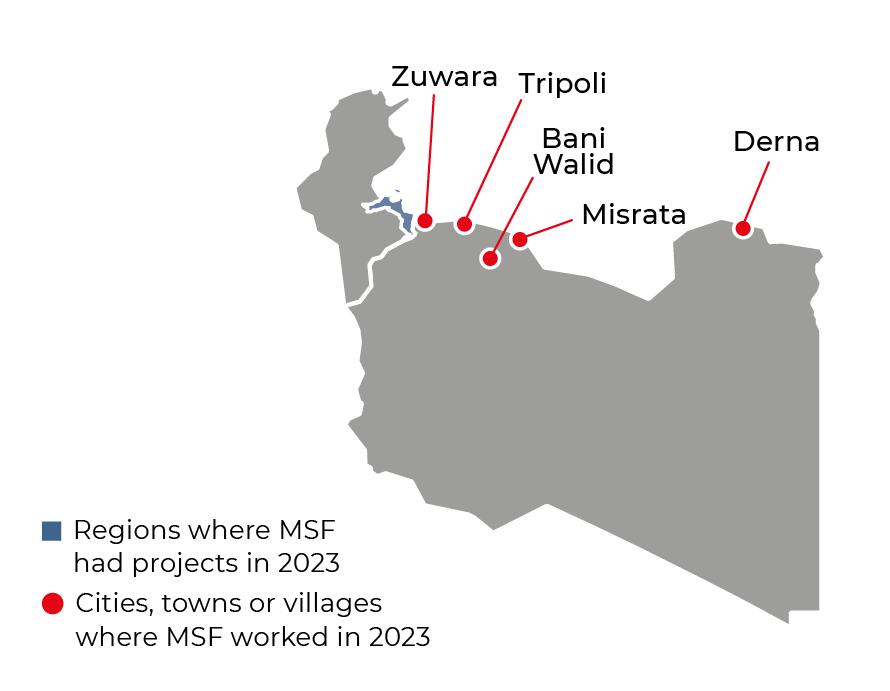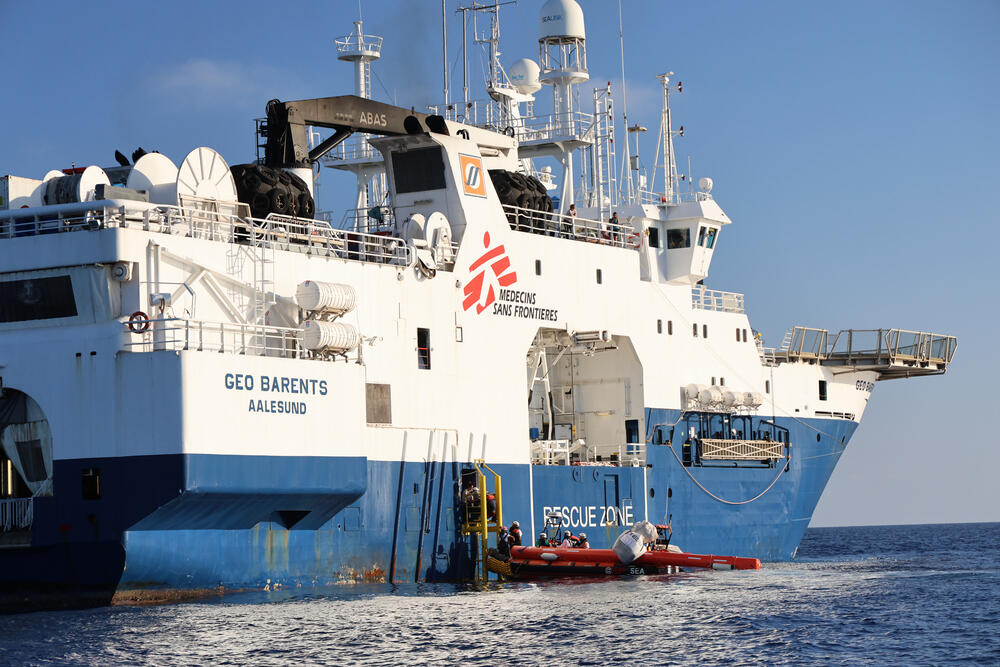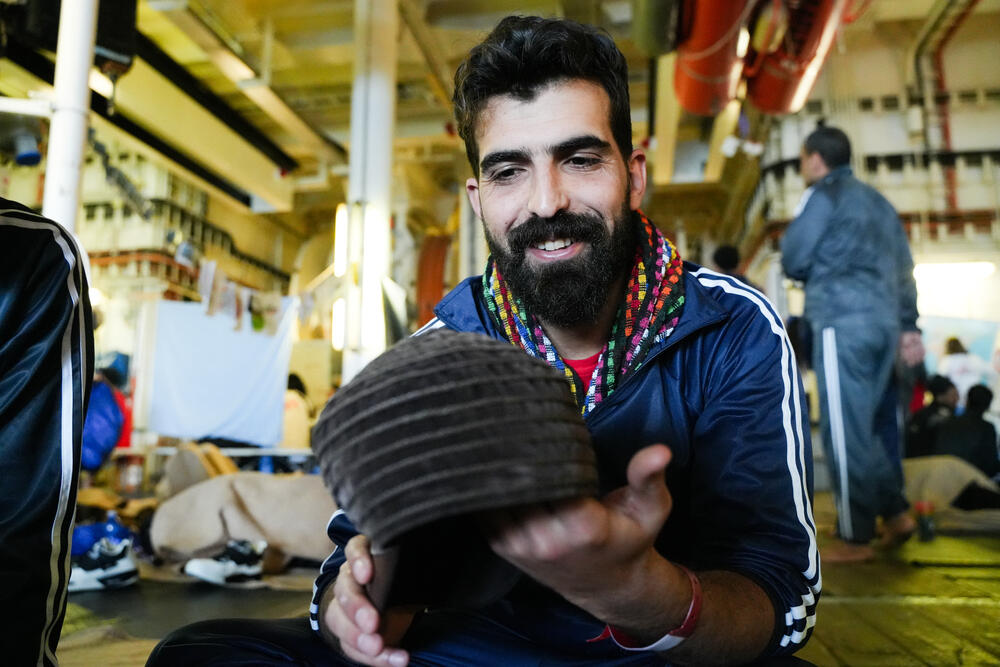Out of Libya
20 June 2024
Three former MSF patients who finally managed to leave Libya look back at their journey - what led them to Libya, but above all the difficulty of getting out.
Jérôme Tubiana, operational adviser on migration, reports on MSF’s attempts to help the most vulnerable people leave Libya legally, through a humanitarian corridor to Italy. This avenue, which has just been renewed for a further three years, has already enabled some 600 people to evacuate since 2021, including around 50 MSF patients.
Question: How has the situation for migrants in Libya and Europe changed since 2022?
In Libya, MSF continues to receive testimonies of migrants subjected to multiple forms of violence, such as torture and sexual and gender-based violence, arbitrary arrests and detentions in inhumane conditions, abductions and forced labour. In the country, these people are still subject to what the United Nations has repeatedly described as crimes against humanity.
Over the period, helping migrants in the country has become even more complicated, both for civil society associations and for international organisations.
Yet the needs are still there. The main official detention centres are concentrated in Tripoli, but many others have opened, often run by militias. In Tripoli, the official detention centres have made improvements to rationalise the treatment of detained migrants and improve certain conditions, which has been welcomed by European partners. However, the improvements are mainly cosmetic: detention is still arbitrary, indefinite, and ill-treatment is a daily occurrence. Very few MSF patients have not been through this.
At the same time, the legal pathways for leaving the country remain extremely limited. In fact, they have become even more limited. In 2021, the year before the report was published, only 1,662 people had been able to leave Libya via the High Commissioner for Refugees (UNHCR) resettlement mechanism out of around 40,000 registered people, and around 3,000 via the IOM voluntary return programme. Today, following the outbreak of war in Sudan last year, the number of people on the UNHCR's lists has risen to almost 63,500. Of these, only around 1,100 have benefited from the UNHCR's resettlement and evacuation mechanisms, leaving the country in 2023.
However, another model had emerged by the time the report came out, and it is one that we have sought to encourage. These would be direct humanitarian corridors between Libya and a safe country, whose selection criteria would be less restrictive than those of the UNHCR (which, in particular, only takes in people of nine nationalities) and which would rely on non-governmental organisations such as MSF to identify people in Libya and to take care of them on arrival in the third country.
Question: What discussions have taken place and how have the report and its recommendations been received?
Many European and North American countries were approached. Unfortunately, there was little response to what we had to say. We arrived at the wrong time: in Europe in particular, we saw many governments becoming increasingly hostile to welcoming migrants, in the name of supposed security or, more trivially, electoral "risks". Policies are increasingly restrictive towards migrants, and this can be seen both in the European Union and in many countries where the far right has entered government. We have also encountered an additional difficulty, specific to Libya, in that many countries have no or no longer any embassies or consulates in the country. France, for example, has made the opening of a humanitarian corridor conditional on their agents being able to meet the people we identify as the most vulnerable of our patients on the spot, with a view to evacuating them, but is still unable to do so due to the lack of consular services.
Question: MSF nevertheless managed to evacuate around 50 patients via a humanitarian corridor between Libya and Italy. What was involved and what exactly did MSF do?
In fact, in 2021, three Italian associations succeeded in negotiating the opening of a direct humanitarian corridor between Italy and Libya, for 500 people in one year. During this period, MSF was able to evacuate t around 30 people who had been under our teams’ medical care in Libya out via the corridor, twelve of whom were taken in by a project we run in Palermo, Sicily, to care for victims of torture. We offered them medical, psychological, social and legal support, including help with their asylum applications. Among the people who made the journey were women victims of sexual violence and human trafficking, often with young children, LGBTQIA+ people and people with medical problems that could not be treated in Libya or in their country of origin. Some were fleeing countries at war. These were people in great danger in Libya, but who, especially if they did not belong to one of the nine nationalities registerable by the UNHCR, had little chance of being able to leave the country legally.
In 2023, this humanitarian corridor has been renewed and provides for the exit of 1,500 people over three years. Some of them will be received by the Italian government and others by Italian associations. In partnership with one of these associations, MSF hopes to bring 300 particularly vulnerable patients out of Libya. In 2024, 19 additional patients have already been evacuated to Italy.
We play a crucial role in this corridor because we are one of the few international organisations present in the country and can therefore help to identify particularly vulnerable people on the ground. But above all, we know the patients we meet in Libya, so we can continue to provide them with the best possible care when they arrive in third countries.


